Understanding Parkinson’s Disease Through Ayurveda: A Holistic Approach
Understanding Parkinson’s Disease Through Ayurveda: A Holistic Approach is a progressive neurological disorder that primarily affects movement. As it progresses, it can lead to tremors, stiffness, and balance issues, significantly impacting the quality of life. While conventional medicine offers various treatments, many people are exploring complementary therapies, including Ayurveda, to manage symptoms and improve overall well-being. This blog delves into the Ayurvedic perspective on Parkinson’s disease, offering insights into its treatment and management.
What is Parkinson’s Disease?

Understanding Parkinson’s Disease Through Ayurveda: A Holistic Approach is characterized by the degeneration of dopamine-producing neurons in the brain, particularly in an area known as the substantia nigra. This depletion of dopamine—a neurotransmitter critical for controlling movement—leads to the hallmark symptoms of the disease:
- Tremors: Involuntary shaking, often starting in the hands.
- Bradykinesia: Slowness of movement, making daily activities challenging.
- Rigidity: Stiffness in the limbs and trunk.
- Postural Instability: Difficulty maintaining balance.
While the exact cause of PD remains unclear, factors such as genetics, environmental influences, and oxidative stress are believed to play a role. Conventional treatments typically involve medications to manage symptoms and, in some cases, surgical interventions.
The Ayurvedic Perspective
Ayurveda, the ancient system of medicine from India, approaches health and disease holistically, focusing on the balance of body, mind, and spirit. In Ayurveda, health is seen as a state of equilibrium among the three doshas—Vata, Pitta, and Kapha—each representing different elements and qualities within the body.
Parkinson’s Disease and Dosha Imbalance
In Ayurvedic terms, Parkinson’s disease is primarily associated with an imbalance in Vata dosha, which governs movement, communication, and sensory perception. The condition can also involve Pitta, particularly in terms of inflammation and metabolic disturbances. Key aspects of the Ayurvedic approach to managing Parkinson’s disease include:
- Vata Imbalance: Characterized by dryness, instability, and irregularity, an increase in Vata can lead to the motor dysfunctions seen in PD.
- Pitta Involvement: May manifest as heat and inflammation in the nervous system, affecting overall neurological function.
Ayurvedic Diagnosis
- Prakriti Assessment: Understanding the individual’s constitution to tailor treatments.
- Pulse Diagnosis (Nadi Pariksha): Assessing the pulse to evaluate dosha imbalances.
- Observation of Symptoms: Evaluating physical and mental symptoms, lifestyle, and diet.
Ayurvedic Treatment
1. Diet and Nutrition
Diet plays a crucial role in Ayurveda, and a balanced diet is vital for managing Parkinson’s disease. Recommendations include:
- Warm, Cooked Foods: Favor easily digestible foods to counteract Vata’s cold and dry qualities.
- Healthy Fats: Incorporate ghee and olive oil to provide lubrication to the nervous system.
- Spices: Use anti-inflammatory spices like turmeric, ginger, and cumin to promote circulation and digestion.
- Hydration: Stay hydrated with warm water, herbal teas, and soups.
2. Herbal Remedies
Ayurvedic herbs can support neurological health and alleviate symptoms of Parkinson’s disease. Some commonly used herbs include:
- Ashwagandha (Withania somnifera): Known for its adaptogenic properties, it can help combat stress and support brain function.
- Brahmi (Bacopa monnieri): Promotes cognitive function and may improve memory and concentration.
- Turmeric (Curcuma longa): Contains curcumin, which has anti-inflammatory and antioxidant properties beneficial for brain health.
- Guggulu (Commiphora mukul): Known for its anti-inflammatory properties and may help in balancing Vata and Kapha.
3. Panchakarma
Panchakarma is a detoxification and rejuvenation therapy in Ayurveda that can be particularly beneficial for individuals with Parkinson’s disease. This process involves five main treatments:
- Vamana (Therapeutic Vomiting): Helps eliminate toxins and balances Kapha.
- Virechana (Purgation): Cleanses the digestive system and removes excess Pitta.
- Basti (Enema): Nourishes the nervous system and balances Vata.
- Nasya (Nasal Administration of Oils): Enhances cognitive function and reduces dryness in the nasal passages.
- Raktamokshana (Bloodletting): Detoxifies the blood and may help in reducing inflammation.
These therapies are usually conducted under the supervision of trained practitioners and can lead to improved symptoms and overall vitality.
4. Lifestyle Modifications
Lifestyle plays a significant role in managing Parkinson’s disease from an Ayurvedic perspective. Key recommendations include:
- Regular Routine: Establishing a daily routine can help stabilize Vata and provide a sense of security.
- Mindfulness and Meditation: Practices like yoga and meditation can enhance mental clarity, reduce stress, and improve overall well-being.
- Gentle Exercise: Activities like walking, tai chi, or yoga can improve flexibility, balance, and strength, helping to manage motor symptoms.
- Adequate Sleep: Prioritize sleep hygiene to promote restorative rest, which is essential for brain health.
5. Emotional Well-Being
Ayurveda emphasizes the importance of mental and emotional health. Parkinson’s disease can lead to feelings of frustration and depression. Ayurvedic practices that may help include:
- Counseling and Support Groups: Engaging with others facing similar challenges can provide emotional support.
- Aromatherapy: Essential oils like lavender and sandalwood can promote relaxation and emotional balance.
- Creative Outlets: Activities such as art, music, or writing can help express emotions and reduce stress.
Integrating Ayurveda with Conventional Treatments
While Ayurveda offers a holistic approach to managing Parkinson’s disease, it’s crucial to integrate these practices with conventional medical treatments. Here are some considerations:
- Consult Healthcare Providers: Always discuss Ayurvedic treatments with healthcare professionals, especially when taking prescription medications.
- Personalized Approach: Tailor Ayurvedic treatments to individual needs, considering existing medications and health conditions.
- Monitor Progress: Keep track of symptoms and adjust treatments as necessary in collaboration with both Ayurvedic and conventional practitioners.
Conclusion
Parkinson’s disease presents a complex set of challenges that can significantly impact individuals and their families. Ayurveda, with its holistic approach, offers valuable insights and treatment options for managing symptoms and improving overall quality of life. Understanding Parkinson’s Disease Through Ayurveda: A Holistic Approach by focusing on diet, herbal remedies, lifestyle modifications, and emotional well-being, individuals can find a balanced path to health.
As you explore Ayurvedic options, remember the importance of working closely with healthcare providers to create a comprehensive and personalized treatment plan. Embracing a holistic approach may help you navigate the journey of Parkinson’s disease with greater resilience and vitality.


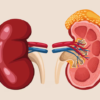

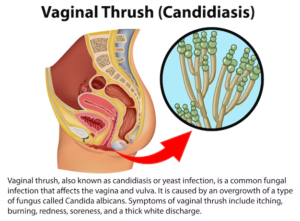
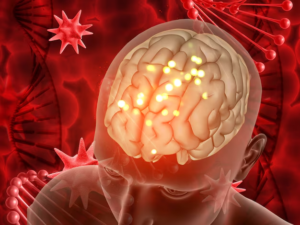
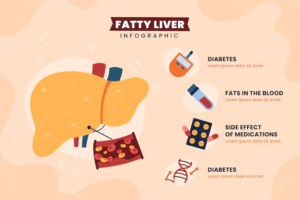
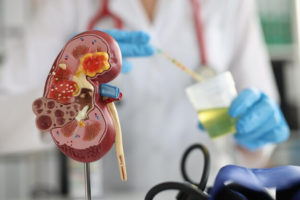
Leave a reply